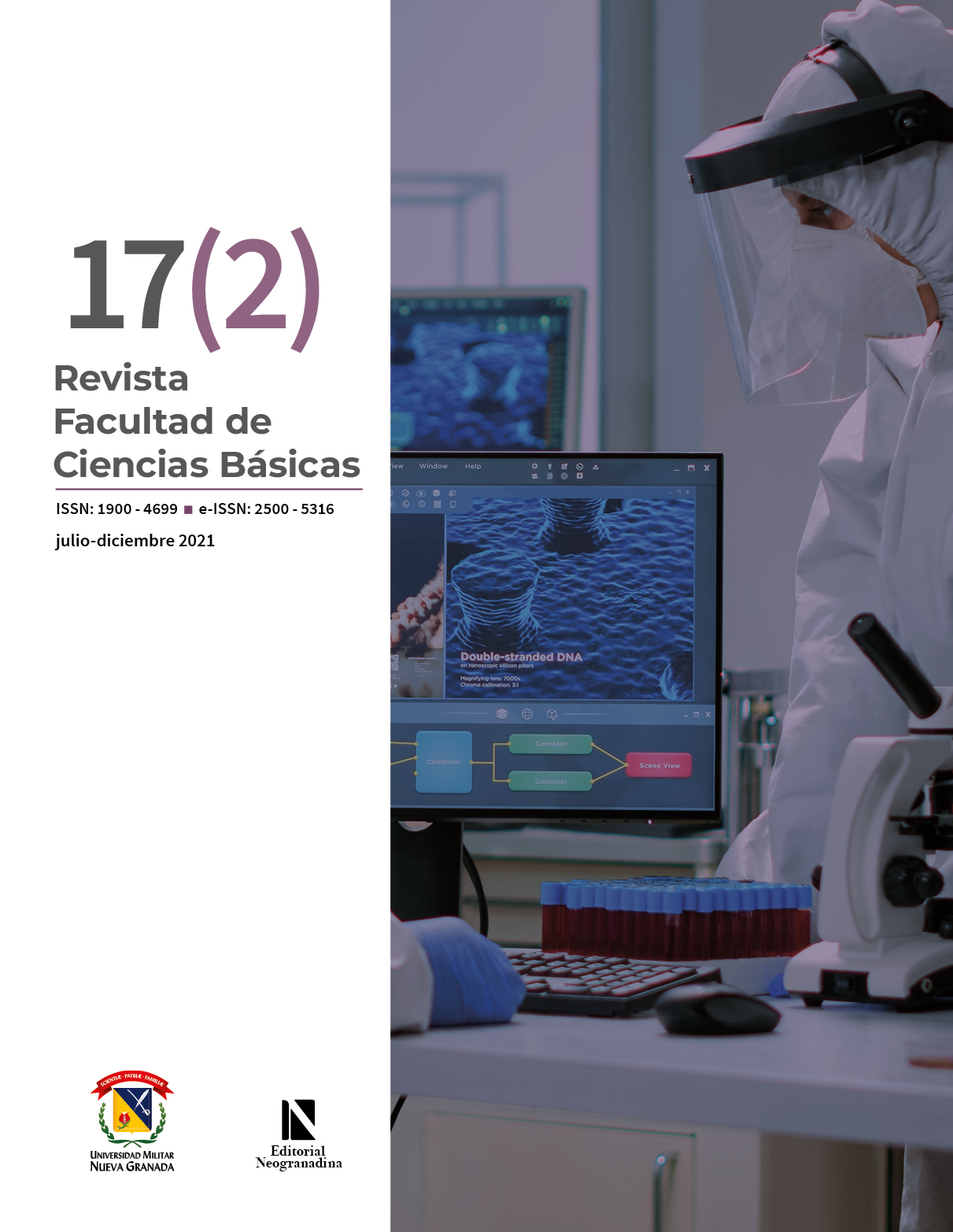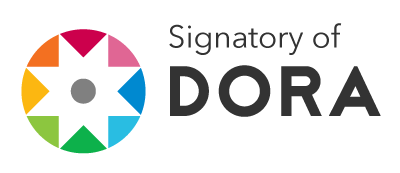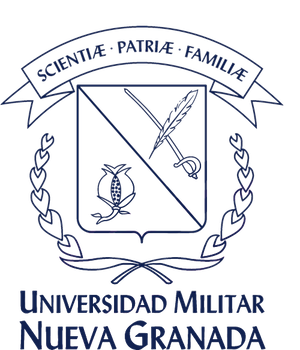Curvatura de torneios Forman-Ricci
Resumo
torneios são um tipo de gráfico direcionado que tem sido usado para estudar a geometria das variedades de bandeiras clássicas. Ficamos interessados neste tipo de gráficos porque as propriedades combinatórias dos torneios podem ser usadas para estudar as propriedades geométricas das variedades de bandeiras. [21] introduziram a curvatura de Forman-Ricci para hiper gráficos direcionados e não direcionados e obtiveram a curvatura para grafos como um caso particular. Neste
trabalho apresentamos as ideias básicas sobre a curvatura Forman-Ricci para grafos direcionados, caracterizamos os torneios parabólicos em termos de curvatura Forman-Ricci e calculamos a curvatura Forman-Ricci para qualquer torneio.
Downloads
Referências
J. W. Moon, Topics on tournaments, Holt, New York: Rinehart and Winston, 1968.
F.E. Burstall y S. Salamon, “Tournaments, Flags and Harmonic Maps”, Mathematische Annalen, vol. 277, pp. 249-265, 1987. DOI: https://doi.org/10.1007/BF01457363.
X. Mo y C.J.C. Negreiros, “(1,2)-symplectic structures on flag manifolds”, Tohoku Mathematical Journal, Second Series, vol. 52, n.o 2, pp. 271-282, 2000. DOI: https://doi.org/10.2748/tmj/1178224611.
N. Cohen, C. J. C. Negreiros y L. A. B. San Martin, “(1, 2)-Symplectic metrics, flag manifolds and tournaments”, Bulletin of the London Mathematical Society, vol. 34, pp. 1-9, 2002. DOI: https://doi.org/10.1112/S002460930200142X.
N. Cohen, C. J. C. Negreiros y L. A. B. San Martin, “A rank-three condition for invariant (1,2)-symplectic almost Hermitian structures on flag manifolds”, Bulletin of the Brazilian Mathematical Society, New Series, vol. 33, n.o 1, pp. 49-73, 2020. DOI: https://doi.org/10.1007/s005740200002
N. Cohen, M. Paredes y S. Pinzón, “Locally transitive tournaments and (1,2)-symplectic metrics on maximal flag manifolds”, Illinois Journal of Mathematics, vol. 48, n.o 4, pp. 1405-1415, 2004. DOI: https://doi.org/10.1215/ijm/1258138518.
M. Paredes, “Aspectos da Geometria Complexa das Variedades Bandeira”, Tese de Doutorado, Universidade Estadual de Campinas, Brasil, 2000.
M. Paredes, “Some results on the geometry of full flag manifolds and harmonic maps”, Revista Colombiana de Matemáticas, vol. 34, pp. 57-89, 2000.
M. Paredes, “Families of (1,2)-symplectic metrics on full flag manifolds, International Journal of Mathematics and Mathematical Sciences, vol. 29, pp. 651-664, 2002. DOI: https://doi.org/10.1155/S0161171202012267.
M. Paredes, P. González y B. McKay, “Sobre un tipo especial de torneos y una clase de métricas sobre variedades bandera”, in Memorias de la Primera Conferencia Iberoamericana de Matemática Computacional. Bogotá: Sociedad Colombiana de Matemáticas, 2001, pp. 125-137.
M. Paredes y S. Pinzón, “On the codifferential of the Kähler form and cosymplectic metrics on maximal flag manifolds”, Turkish Journal of Mathematics vol. 34, 305-316, 2010.
M. Paredes y S. Pinzón, “Some remarks about cosymplectic metrics on maximal flag manifolds”, in Geometric and Topological Methods in Quantum Field Theory, H. Ocampo, E. Pariguán and S. Paycha, eds. Cambridge: Cambridge University Press, 2010, pp. 394-404. DOI: https://doi.org/10.1017/CBO9780511712135.013.
M. Paredes y S. Pinzón, “Tournaments and parabolic almost complex structures on flag manifolds”, Contemporary Mathematics, vol. 509, pp. 221-231, 2010. DOI: https://doi.org/10.1090/conm/509/09981.
M. Paredes y S. Pinzón, “Variedades bandera maximales, torneos y aplicaciones armónicas”, Revista Integración, vol 18, n.o 2, pp. 65-77, 2000.
Y. Lin, L. Lu y S.T. Yau, “Ricci curvature of graphs”, Tohoku Mathematical Journal, Second Series, vol. 63, n.o 4, pp. 605-627, 2011. DOI: https://doi.org/10.2748/tmj/1325886283.
Y. Ollivier, “Ricci curvature of Markov chains on metric spaces”, Journal of Functional Analysis, vol. 256, pp. 810-864, 2009.DOI: https://doi.org/10.1016/j.jfa.2008.11.001
Y. Lin, L. Lu y S.T. Yau, “Ricci-flat graphs with girth at least five”, 2013. [Internet]. Available: https://arxiv.org/abs/1301.0102.
Y. Lin y S.T. Yau, “Ricci Curvature and eigenvalue estimate on locally finite graphs”, Mathematical Research vol. 80, no. 3, pp. 605-622, 2018. https://match.pmf.kg.ac.rs/electronic_versions/Match80/n3/match80n3_605-622.pdf.
R. P. Sreejith, J. Jost, E. Saucan, and A. Samal, “Systematic evaluation of a new combinatorial curvature for complex networks,” Chaos Solitons and Fractals, vol.101, pp. 50-67, 2017. DOI: https://doi.org/10.1016/j.chaos.2017.05.021.
M. Weber, J. Stelzer, E. Saucan, A. Naitsat, G. Lohmann, and J. Jost, “Curvature based methods for brain network analysis”, 2017. [Internet]. Available: https://arxiv.org/abs/1707.00180.
R. Forman, “Bochner’s method for cell complexes and combinatorial Ricci curvature”, Discrete and Computational Geometry, vol. 29, n.o 3, pp. 323-374, 2003. DOI: https://doi.org/10.1007/s00454-002-0743-x.
A. E. Brouwer, “The enumeration of locally transitive tournaments”, Afdeling Zuivere Wiskunde [Department of Pure Mathematics], Mathematisch Centrum, Amsterdam, vol. 138, 1980.
J.S. Fuentes, M. Paredes and S. Pinzón, “Acerca de los dígrafos localmente transitivos”, Revista Integración, vol. 22, pp. 23-35, 2004.
R.P. Sreejith, K. Mohanraj, J. Jost, E. Saucan and A. Samal, “Forman curvature for complex networks”, Journal of Statistical Mechanics: Theory and Experiment, vol. 6, p. 063206, 2016. DOI: https://doi.org/10.1088/1742-5468/2016/06/063206.
N. Agudelo, J. Monsalve and J. Rada, “On the characterization of digraphs with given rank”, Linear Algebra and its Applications, vol. 587, pp. 215-227, 2020. https://doi.org/10.1016/j.laa.2019.11.008.
J. Monsalve and J. Rada, “Oriented bipartite graphs with minimal trace norm”, Linear Multilinear Algebra, vol. 67, no. 6, pp. 1121-1131, 2019. DOI: https://doi.org/10.1080/03081087.2018.1448051.
J. Monsalve, J. Rada and Y. Shi, “Extremal values of energy over oriented bicyclic graphs”, Applied Mathematics and Computation, vol. 342, pp. 26-34, 2019. DOI: https://doi.org/10.1016/j.amc.2018.09.018.
H. Farooq, Y. Chen, T. T. Georgiou, A. Tannenbaum and C. Lenglet, “Network curvature as a hallmark of brain structural connectivity”, Nature communications, vol. 10, no. 1, pp. 1-11, 2019. DOI: https://doi.org/10.1038/s41467-019-12915-x.
M. Pouryahya, J. Mathews, y A. Tannenbaum, “Comparing three notions of discrete Ricci curvature on biological networks”, 2017. arXiv preprint arXiv:1712.02943.
Copyright (c) 2023 Revista Facultad de Ciencias Básicas

Este trabalho está licenciado sob uma licença Creative Commons Attribution-NonCommercial-NoDerivatives 4.0 International License.











